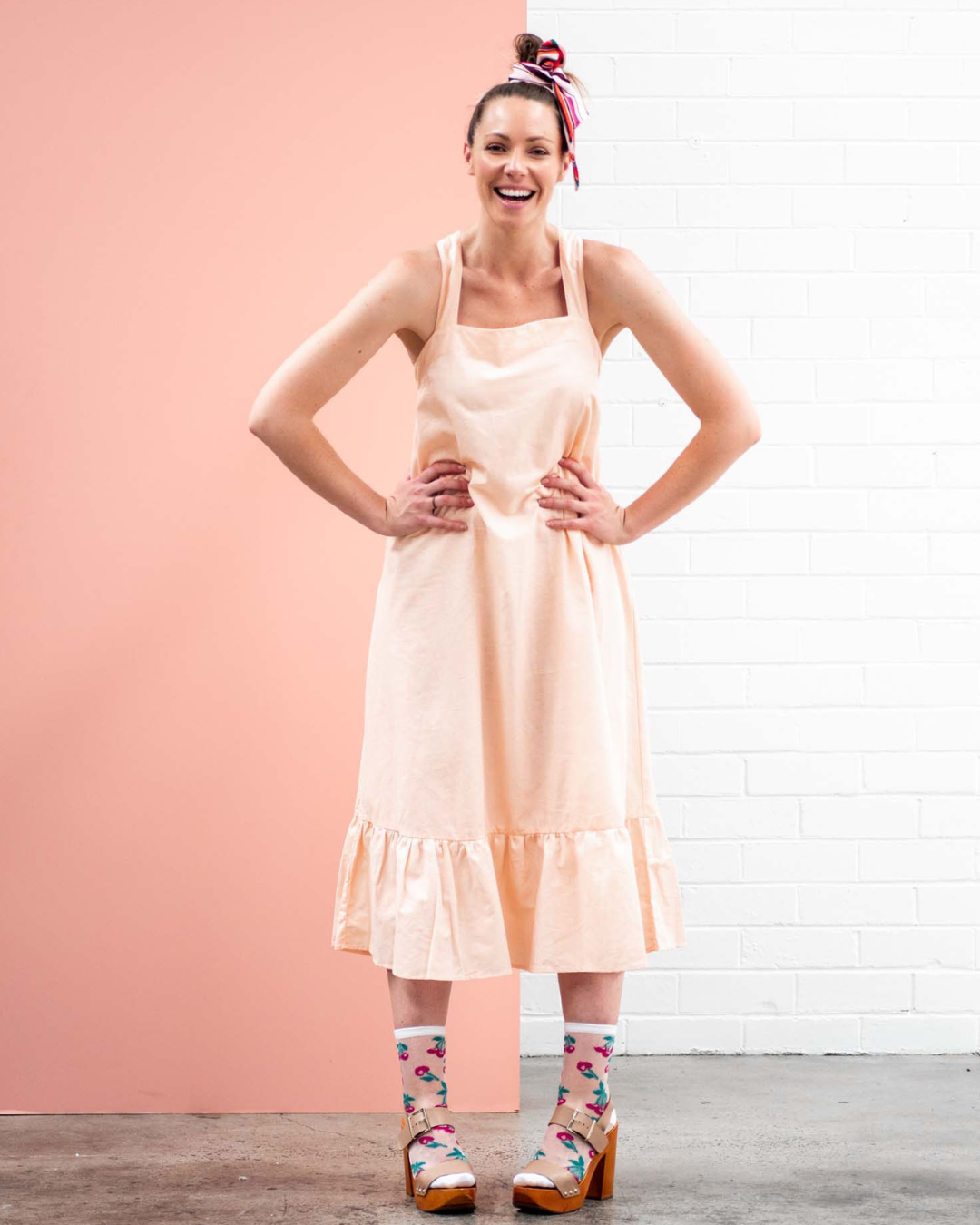Mia Penn is a slow fashion advocate. When I ran my own sustainable and ethical label ten years ago, I used vintage and recycled fabrics for every piece. I’ve always loved vintage prints and undulating retro florals, and it’s what drew me to Mia’s label, The Raisin Did It, in the beginning.
The Raisin Did It is now in its fifteenth year of operation, but it’s been a unique slow fashion label with a vintage-inspired twist from the very beginning. Each collection is made in limited runs using rare and reclaimed fabrics because Mia is passionate about sustainability and ethics. She also repurposes her offcuts so that nothing is wasted, and she recently switched from single-use plastic satchels to paper parcels for all of her online orders.
Mia found time in her busy sewing schedule to answer a few questions for me, and her story is nothing short of inspiring...
What packaging did you use before the packaging you use now?
I’ve always wrapped my orders in recycled paper and fabric offcuts which were then placed inside standard plastic satchels provided by Australia Post.
What do you use now and why did you switch?
It was driving me crazy purchasing single-use plastic and also not knowing if the person at the other end would make an effort to do soft plastic recycling, which isn’t part of a standard council waste service. With the ongoing plastic issue and the recent news that China is refusing to take any more of Australia’s waste, it’s just not enough to rely on recycling. I believe a greater focus should be placed on creating and consuming less in the first place.
I’ve now been able to set up two different online postal systems, both of which allow me to print a label and stick it to the packaging of my choice. I also found a local company selling fully recyclable post bags made from 50% recycled paper. It’s tough to avoid plastic in all avenues of daily life as an individual or a business but every time we make a better choice - it really does count!
Why are you passionate about making a positive difference through your business practices?
I could talk about this for hours Claire! I absolutely love clothes and what they can do for our comfort, confidence and self-expression. I can remember the most special occasions in my life, even as a kid, by what I wore and what I ate! When you love something, and you feel good in it, you want to keep it forever and wear it over and over.
I find it utterly confusing and disturbing that cheap, mass-produced, fast fashion has changed our attitudes towards clothing. We're at a point where the availability is so high, and the cost is so low that we now see it as a disposable commodity. We are so far removed from how garments are produced, and we have devalued the end product so much, that it’s too easy to consume without understanding and considering the broader human and environmental ramifications. We need to re-evaluate plastic use and consider the environment throughout the entire manufacturing process too, not just products themselves, but how they are transported, packaged and ultimately used.
While mine is a small business and no one is perfect, I hope to show that slow, locally made fashion, created with an environmental conscience, is a better choice for individuals and our planet. I believe I’m riding the wave of change and that people are not only supportive but hungry for slow fashion! My ethical and sustainable creations show that slow fashion can be really fun, unique and colourful - at an accessible price point too.
Besides packaging, what other ethical and sustainable practices do you engage in?
Most of my work is centred around vintage fabrics, so the aesthetic and ethos are inextricably tied up in valuing an existing resource that may have otherwise remained unused. This means collecting old materials like fabric, buttons and other haberdashery, bed linen and embroideries, then reinventing them into one of a kind, high-quality pieces that can be treasured for years to come.
When I use new fabrics, I only choose natural fibres like linen, cotton, bamboo and Tencel. My garments are only produced in small runs to avoid fabric wastage and oversupply of stock which is a primary cause of waste for big brands. I make everything myself along with a little cutting and sewing business in the same suburb which I have a long-standing relationship with, that meet all Australian standards for safe work practices and pay. There is nominal transport and packaging used when they are so close to home too!
Once the larger garments have been cut, I save and sort all the fabric remnants for use as feature panels or patchworking in smaller pieces. The tiny bits I often to give to friends who can use them for hand pieced projects or children’s craft. Waste not, want not!
Support an ethical and sustainable fashion future and follow Mia’s journey online, or shop from The Fashion Advocate’s range of slow fashion designers here.
The Fashion Advocate x






